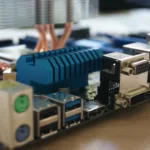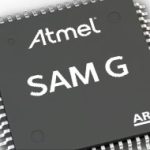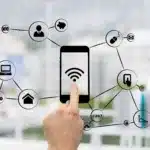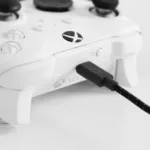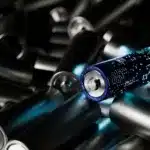Introduction
The integration of smart lighting systems with the Internet of Things (IoT) represents a significant leap forward in managing and interacting with lighting in various environments. By harnessing the power of IoT, smart lighting goes beyond mere illumination, offering enhanced functionality, energy efficiency, and a new level of control. This article deeply elucidates the fundamentals, benefits, challenges, and future prospects of integrating smart lighting systems with IoT.
Fundamentals of Smart Lighting and IoT
Smart lighting is a crucial aspect of IoT, where lighting systems are interconnected and can be managed through digital technology, enabling enhanced control, efficiency, and customisation of lighting. Let’s explore the significance and fundamentals of the critical synergy of smart lighting and IoT.
Understanding Smart Lighting: Lighting the Future
Smart lighting refers to lighting systems equipped with customisable technology that enables automatic control of lights. These systems encompass luminaires embedded with intelligent components, allowing remote control, automation, and customisation of illumination parameters. Smart lighting systems can be built using multiple communication technologies, including Wi-Fi, Bluetooth, Zigbee, and Z-Wave. Additionally, the smart lighting system can be controlled remotely using smartphones or voice-controlled assistants with extensive customisation options, including colour adjustments, brightness levels, and turning lights off or on, among others.
The Perfect Synergy Between Smart Lighting and IoT
The need for IoT-powered smart lighting systems is necessitated by a combination of technological advancements, economic factors, regulatory pressures, and changing consumer preferences. IoT, a comprehensive network of interconnected devices that communicate over the internet, allows data exchange and remote management. In the context of smart lighting, IoT enables lights and sensors to connect to the internet, facilitating remote control, monitoring, and optimisation of lighting based on real-time data. When these two technologies converge, they unlock a plethora of possibilities for energy efficiency, convenience, and smart home automation.
Key Benefits of Integrating Smart Lighting with IoT
IoT-enabled smart lighting brings several key benefits that enhance efficiency, user experience, and environmental sustainability. Some of the significant advantages include:
Energy Efficiency and Cost Savings
By optimising lighting based on occupancy and ambient light levels, smart lighting systems can significantly reduce energy consumption. IoT integration allows granular control and monitoring, further enhancing energy savings.
Enhanced Control and Flexibility
Users can control IoT-enabled smart lighting systems through smartphones, voice assistants, or web interfaces, offering unparalleled flexibility. This includes adjusting brightness, colour temperature, and scheduling tailored to personal preferences or operational requirements.
Improved Safety and Security
Smart lighting can contribute to safety and security by automatically illuminating dark areas when motion is detected or by simulating occupancy in buildings to deter intruders.
Data-Driven Insights
IoT-enabled systems collect vast amounts of data on lighting usage and environmental conditions. Analysing this data can reveal insights for further optimisation, contributing to energy savings and improved user experiences.
IoT-Enabled Smart Lighting: Challenges in Integration
While implementing smart lighting systems with IoT offers unprecedented benefits, it comes with certain challenges, such as:
Initial Cost and Complexity
The initial cost of and the complexity of integration can be barriers to adoption. However, the long-term benefits, in terms of savings, often outweigh these initial challenges.
Interoperability
With a multitude of devices and protocols in use, ensuring interoperability among all components of a smart lighting system can be challenging. Standards and open platforms are gradually addressing this issue.
Security Concerns
As with any IoT system, smart lighting is vulnerable to cyber threats. Ensuring robust security measures, including encryption and regular software updates, is crucial to protect against unauthorised access and data breaches.
Future Prospects and Trends of IoT-Powered Smart Lighting
Integrating smart lighting systems with IoT is poised to witness continued evolution and innovation, driven by advancements in sensor technologies, artificial intelligence, and connectivity standards. Future trends may include:
Integration with Other Smart Home Systems
Smart lighting is increasingly being integrated with other smart home systems, such as climate control and security, for a cohesive and intelligent home automation experience.
Advances in Technology
Emerging technologies, such as Li-Fi (light fidelity), offer the potential for smart lighting systems to transmit data through light waves, opening up new avenues for connectivity and services.
Sustainability and Smart Cities
Smart lighting is a key component of smart city initiatives, contributing to energy efficiency, safety, and quality of life in urban areas. IoT-powered smart lighting is crucial for scalable and flexible smart city infrastructures.
Takeaway
The amalgamation with IoT heralds a new era of robust efficiency, control, and possibilities in lighting management. While challenges remain, the benefits of enhanced energy savings, flexibility, and insights make it a compelling proposition for homes, businesses, and cities alike. With the progression of technology, the future of smart lighting with IoT promises even more incredible advancements and innovations, driving towards a more sustainable and intelligently managed lighting environment.









